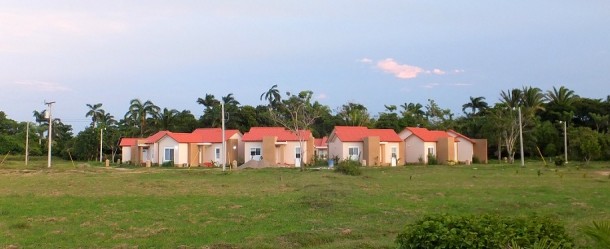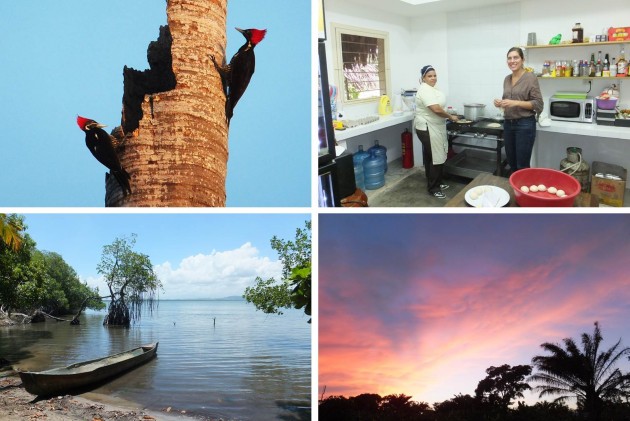I continue my journey along the Honduran Caribbean coast. From October, cruise ships will start arriving to the quiet little town of Trujillo. Many foreigners, mostly Canadians, come to invest in mass. Everything is happening right now, the place is changing. This is the first time I watch this so closely, the beginnings of the transformation of a place to receiving increasing tourism … and I must say it’s a little scary…
Canadian investments for rent during the holidays
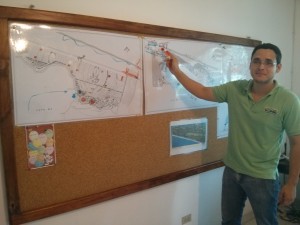 I googled “eco-hotel Honduras” and wrote to several institutions. One hotel replied and invited me to stay: the Trujillo Beach Eco Resort. The project, a large hotel/building complex is under construction. Andre, the Marketing Manager, welcomed me into his office in La Ceiba and presented the project plans to me. These are in fact, two major complexes: one in La Ceiba and the other one in Trujillo (where I’m staying). I do not meet the actual investor and project owner, Ronny; He is an Israeli businessman who lives in Canada. I mostly spend time with Ales, the responsible of welcoming guests and customers at the resort.
I googled “eco-hotel Honduras” and wrote to several institutions. One hotel replied and invited me to stay: the Trujillo Beach Eco Resort. The project, a large hotel/building complex is under construction. Andre, the Marketing Manager, welcomed me into his office in La Ceiba and presented the project plans to me. These are in fact, two major complexes: one in La Ceiba and the other one in Trujillo (where I’m staying). I do not meet the actual investor and project owner, Ronny; He is an Israeli businessman who lives in Canada. I mostly spend time with Ales, the responsible of welcoming guests and customers at the resort.
The idea of this resort is a bit unusual for me. The company Eco-Ventures sells lands to Canadian investors, and each one of them then build their houses in their own way. These are mostly individuals who invest in Honduras because of its attractive prices and its proximity to the Caribbean Sea. For most, the main objective is to be able to come here and spend some holidays or a few winter months; some dream of moving here when their time of retirement comes.
The company Eco-Ventures handles and rents those houses to other tourists when their owners are not there. At the moment, there is not a lot of tourism in Trujillo to be honest… Only some local tourists come during periods of high-peak seasons (in the famous Holy Week in April, for instance). And we must say that the resort is (for now) out of town, nearly half an hour away in a 4×4 from the city centre, in the middle of the Honduran nature.
A Project under construction
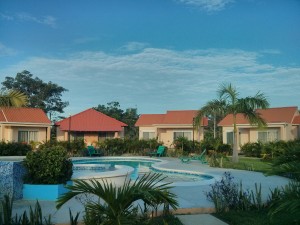 Trujillo Beach Eco Resort, will be a big project; with around 500 building structures spread over 4km along the beach, and 1km inland just outside of the Guaimoreto Park Lake. I find it hard to imagine it all, it is such a huge project. This is the birth of a new mini town next to the city. I’m staying in an already finished condominium. At the moment, the resort consists of these two condos (consisting of 12 little cottages), a large edifice under construction right in front of the beach, and small houses here and there, already completed or underway. I have a little feeling of being somewhere in SimCity!
Trujillo Beach Eco Resort, will be a big project; with around 500 building structures spread over 4km along the beach, and 1km inland just outside of the Guaimoreto Park Lake. I find it hard to imagine it all, it is such a huge project. This is the birth of a new mini town next to the city. I’m staying in an already finished condominium. At the moment, the resort consists of these two condos (consisting of 12 little cottages), a large edifice under construction right in front of the beach, and small houses here and there, already completed or underway. I have a little feeling of being somewhere in SimCity!
I spend 3 nights here, alone, in one of these little houses in the middle of “almost” nowhere, but with a nice pool only for me. In the mornings, Ales takes me walking to discover the nice surroundings, and in the afternoons I work on the computer searching for contacts of “bird watching” associations for Andre.
The environment is really nice, and there are plenty of opportunities to organize excursions with the local population. Ales is full of good ideas, it only remains to develop them all!
Where’s the “Eco” part in all this…?
It is quite difficult to combine the ecological aspect with such great building project concept in a certainly natural area…I feel like the “Eco-tourism” concept is a rather fashionable concept throughout Central America. It’s just like the term is used only when the hotel is located in the middle of nature (versus all-inclusive resort beachfront Cancun style).
The resort will comply with all legal construction affairs and mandatory norms in Honduras: water and waste treatment systems, for example… The project Engineer, responsible of the whole project, explains that at the moment they are “reforesting” the deforested land that has been affected by humans for quite some time now. They plant trees here and there. The agreement is that each owner of each terrain can build and construct however they please; there is only one given condition, and it is to respect a certain construction/vegetation ratio.
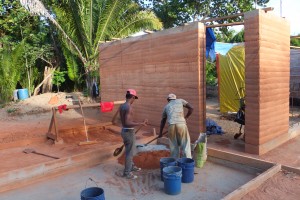 I met one of the architects. One of the owners has chosen a rather eco-based construction method “mud” (filth). It is mixed with a little cement, and it respects the basic orientations of the building using the sun and wind to resourcefully optimize in thermal isolation (see video and article on Hopineo.org).
I met one of the architects. One of the owners has chosen a rather eco-based construction method “mud” (filth). It is mixed with a little cement, and it respects the basic orientations of the building using the sun and wind to resourcefully optimize in thermal isolation (see video and article on Hopineo.org).
On the other hand, I went to a place where a large building construction is taking place at the moment, where on the contrary, even the basics of building orientation to optimize the use of the sun from and the wind are not applied (see the book “Sun, wind, and Light: Architectural Design Strategies” by Mark DeKay & GZ Brown for good examples of applications on this)
Let’s be positive, even if the construction part (which is certainly a very important part…), is not the best example of sustainability, they can be many things which can be done in the future on other areas, like: waste management, water, energy, social responsibility, community development, promotion of heritage, education of staff and tourists, amongst others. (view all hopinnovations categories on Hopineo.org).
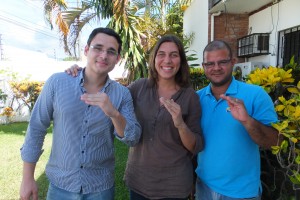 I see that Ales, the Manager, has a beautiful definition of sustainable tourism and he is full of great ideas on this subject. I hope that investors will be willing to fund and implement these ideas to equip this “eco-resort” with at least some innovative practices for Honduras (besides agreement with the law). Especially because the interest on this land goes beyond its beaches, it is also its richness of fauna and flora. It is therefore, very important to understand, respect and protect it, in order to attract long-run tourists!
I see that Ales, the Manager, has a beautiful definition of sustainable tourism and he is full of great ideas on this subject. I hope that investors will be willing to fund and implement these ideas to equip this “eco-resort” with at least some innovative practices for Honduras (besides agreement with the law). Especially because the interest on this land goes beyond its beaches, it is also its richness of fauna and flora. It is therefore, very important to understand, respect and protect it, in order to attract long-run tourists!
I have in any case, had a very nice stay here with Ales and other employees of the resort. They treated me like a member of their team. I even learned how to make tortillas with Corina (see video on youtube for the crash course with me in the kitchen of the restaurant). I was able to discover the surroundings of beautiful Lake Guaimoreto (see video), visited Trujillo, and observed monkeys and birds at sunset and sunrise with Ales (see some photos on Picasa).
And then, I headed for three days of relaxation on the small island of Utila to increase my diving level to PADI Advanced… no need for words to describe the experience, I suggest you to follow me in pictures, photos and video: meeting with a small, cute turtle, and marine exploration.
Translated by Lina Arenas,
Student in Hospitality Management, Netherlands

